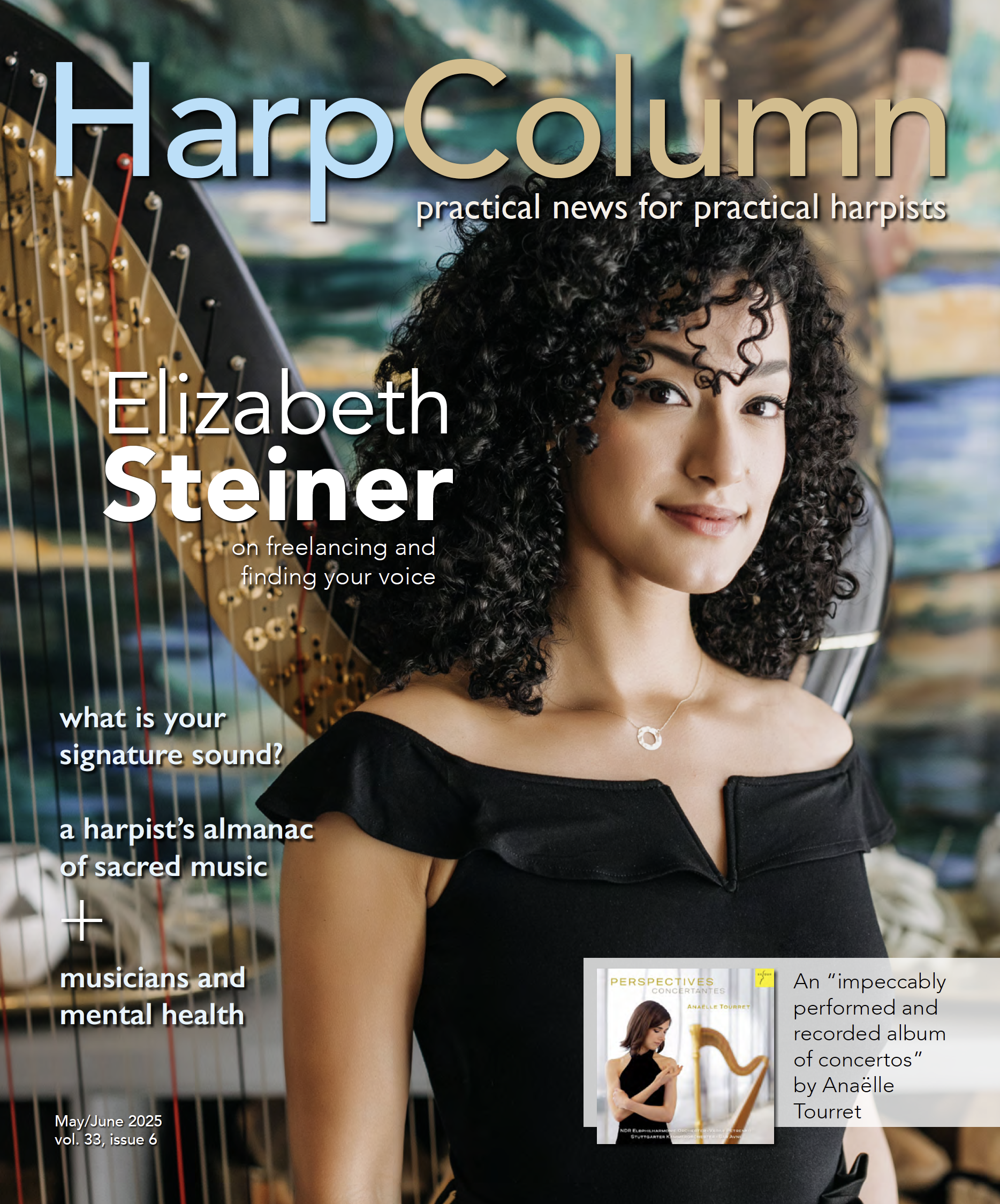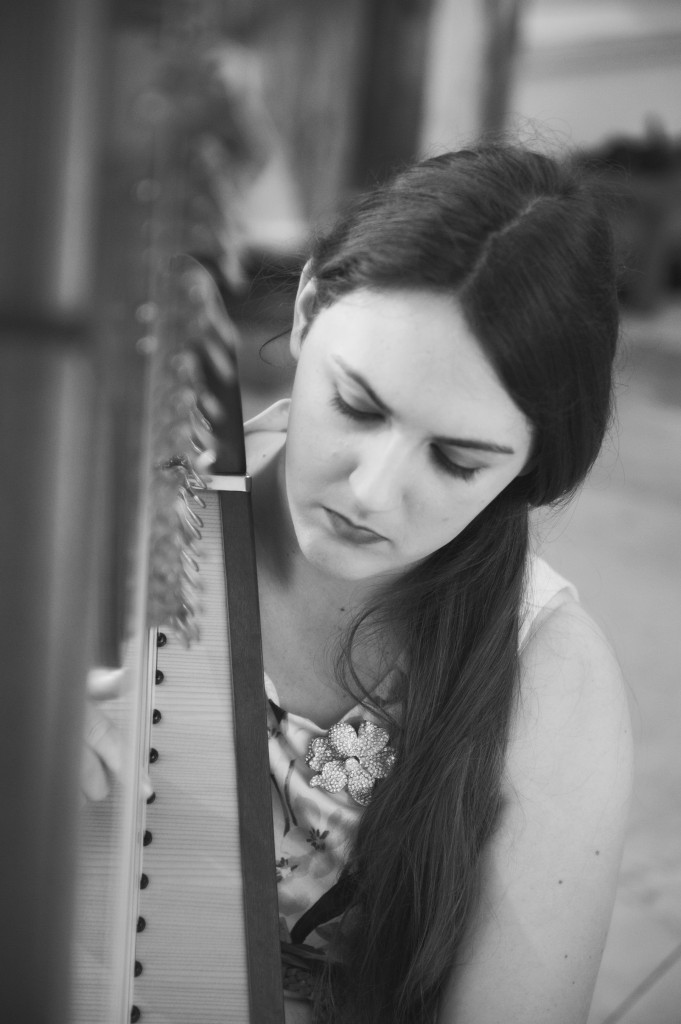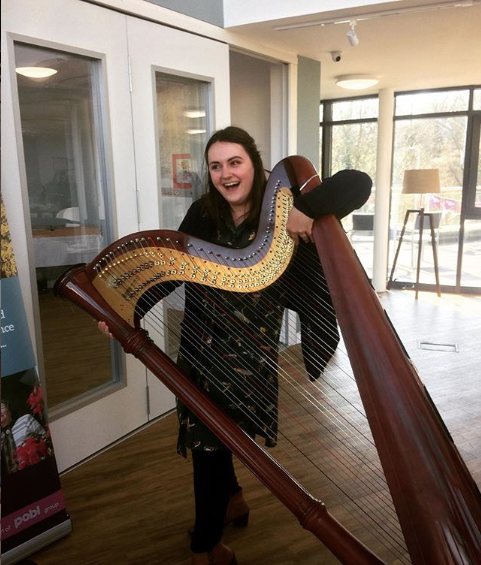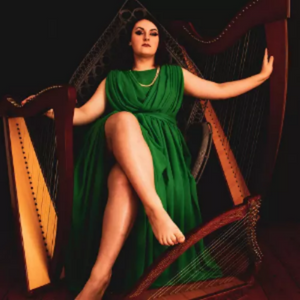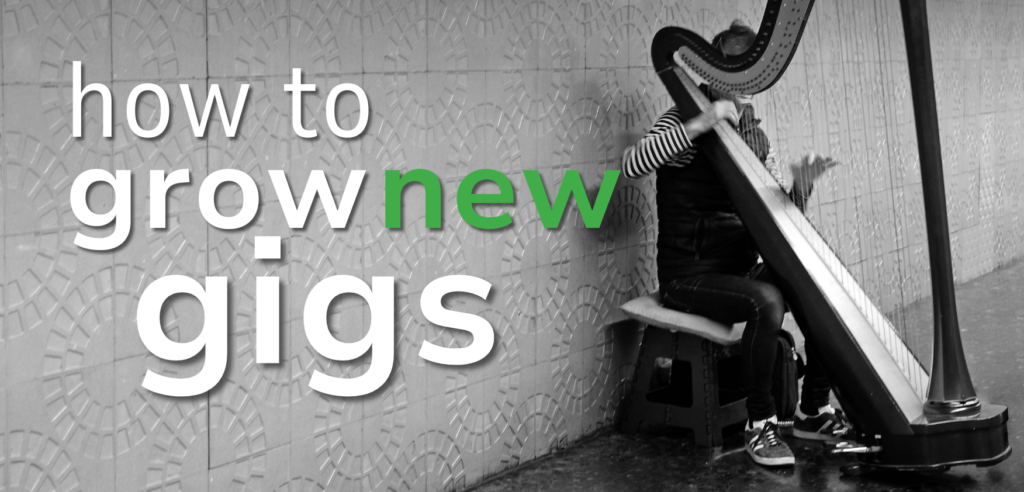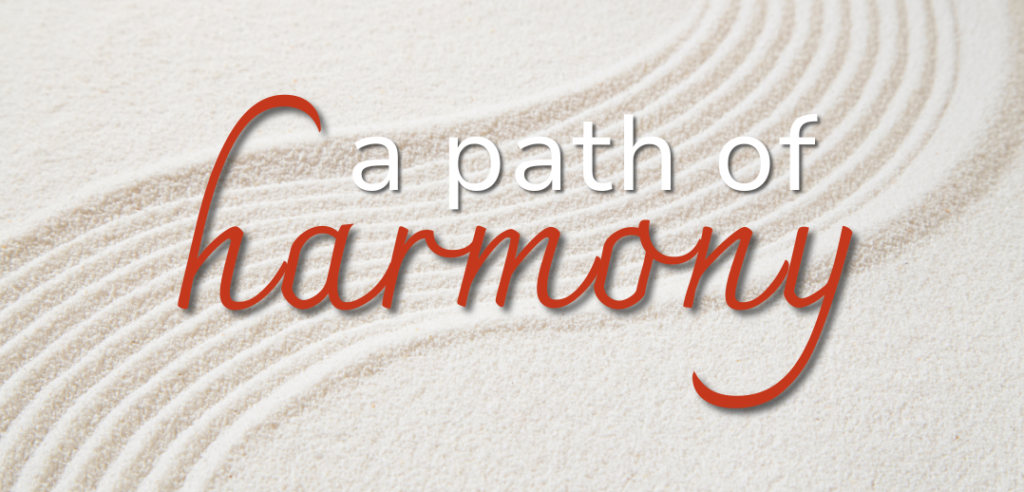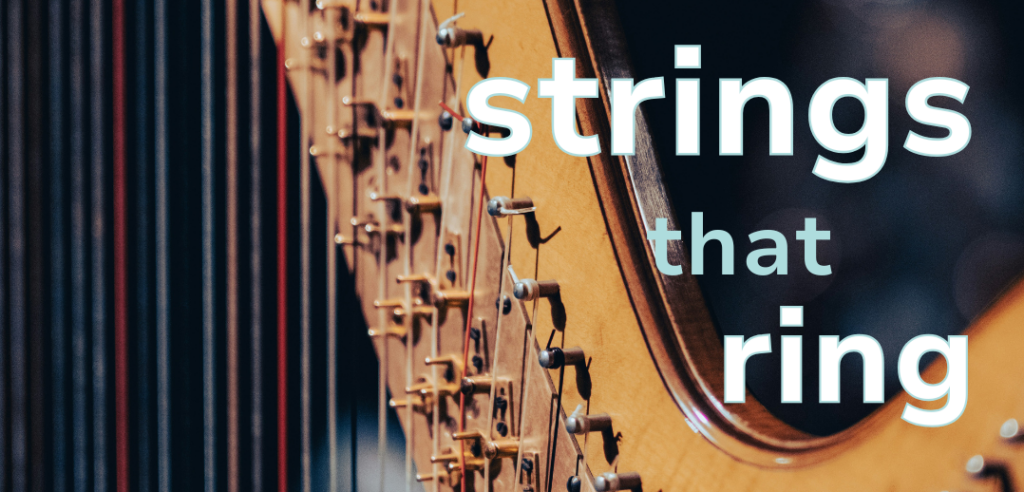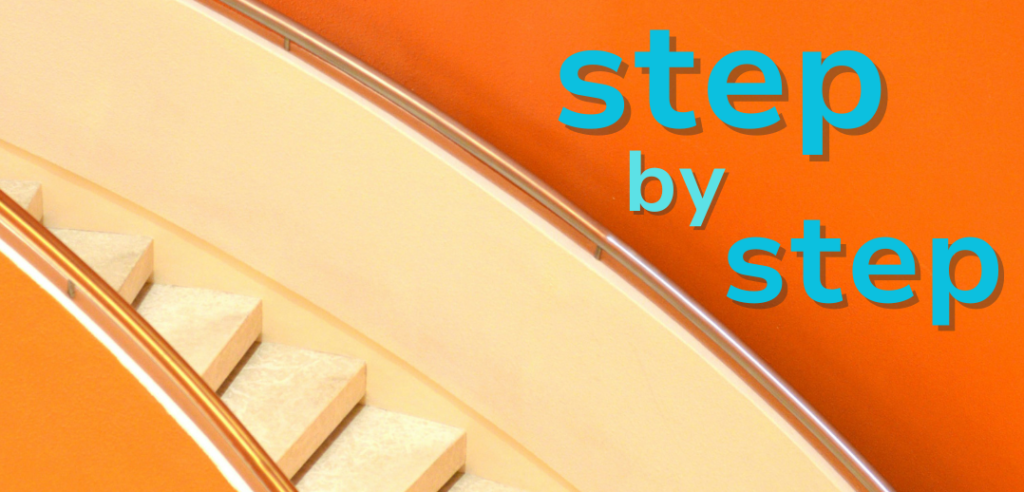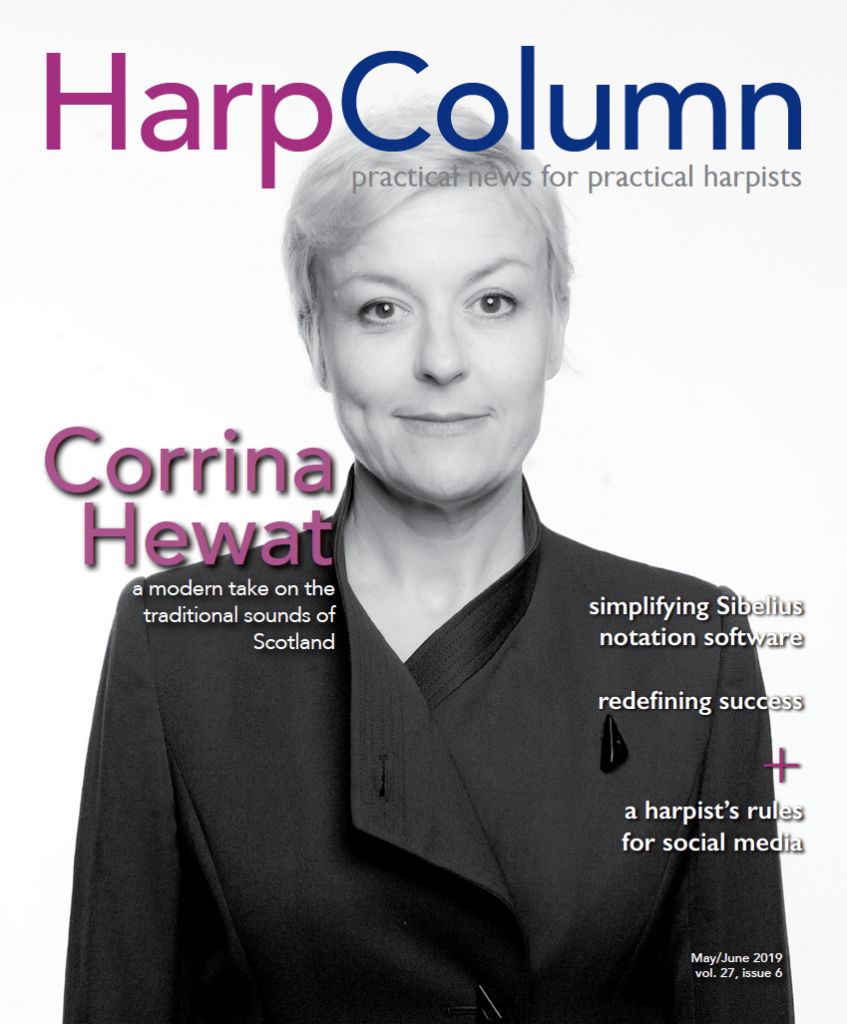Author Sam Hickman is a professional freelance harpist in Cardiff, Wales. Harp Column readers may remember her how-to article on busking in our November/December 2017 issue. You can join her parents in following Sam on social media @samhickmanmusic.
Welcome friends! In this handy guide I will let you in on some secrets to find joy in your online practice with the goal of creating a social media presence that is fresh, engaging, and enjoyable to consume as well as creative, inspiring, and healthy. Sound impossible? It is possible. Let me show you how.
Let’s Be Friends
Here are some simple ground rules I like to keep in mind when doing anything on social media.
Rule #1: None of it Really Matters.
This is fundamental to all activities online. When you go up to bed and leave your phone in your office or studio (stop checking your emails in bed, seriously), none of what you did on social media really matters. Unless you did something truly terrible like bullied a small child or used the caption “Today’s Office,” but we will get to that later.
Ground Rules
- None of it really matters
- Tweet like yo’ momma’s watching
- If it doesn’t bring you joy, don’t do it
- Mute and unfollow
When it all comes down to it, you’re not going to win a Grammy for Best Tweet or get a gold medal at the USA International Harp Competition for doing a great Instagram story. You’re going to win for playing the harp and doing your job. Social media is a tool for self promotion, and none of it really matters for your professional career. It’s a shop window for potential clients; it’s not the store itself.
Rule #2: Tweet Like Yo’ Momma’s Watching
My parents follow me on all platforms because they love me, but also because they can keep an eye on me, make sure I’m eating properly and getting home safely each night. This started at the beginning of my professional career when I started doing public pages and treating my online presence as a shop window for my work. This means that anything and everything I tweet, post, or share has the potential of being read and consumed by the people who changed my diaper. This, in turn, has led to increased accountability and helped me to be a lot more clear with the content I put out. If my mother looks at my page, I’d like her to know why I was there and what I was doing. Implement this in your life and it’ll serve you well.
Rule #3: If It Doesn’t Bring You Joy, Don’t Do It
I post on social media every day I feel like it, and when I don’t want to, I don’t. I do it because it makes me laugh a lot of the time, and also because it lets my friends know what I’m up to, so the next time I see them they aren’t surprised that I burned my house down and shaved off my eyebrows. The best way to create a healthy relationship with social media is to do it only when it makes you happy and you have something worth sharing. You are a business, but you’re also a person, and if you run your social media presence like a business it won’t be as enjoyable to consume, and if it’s not enjoyable to consume your followers are going to stop looking. Remember rule #1: it doesn’t really matter! Your career will not suffer if you don’t post a photo from that bat mitzvah you played yesterday. No one is making you post. It’s a fun activity, and if you don’t like it, don’t do it. You do not lose points as a harpist because you didn’t live stream your concert.
“The best thing about being a harpist on social media in 2019 is that you can talk to other harpists from all over the world and get feedback, ideas, and advice from some of the best colleagues you will never meet.”
Rule #4: Mute and Unfollow
I am a deeply competitive person, I get it from both my parents, and it was fostered in the world of choral singing where I grew up. (I know, cut-throat competitive is not the first thing you think of when someone says “choral singing,” but everyone is just trying to get the soprano solo.) As a result, I get incredibly jealous when I see another harpist in my area going to gigs and having success, so much so that when one harpist said in a tweet that she had done 50 gigs that year, I spent the next 25 minutes going through my diary counting my gigs to see if I had beat her…I had not. If, like me, you are prone to feeling bad because our society tells us that if you’re not winning then you’re failing, or because you didn’t have a gig that weekend and feel bad about it, a simple and free solution is the mute button. In a yoga class one morning the teacher said, “Put away the things that do not serve you.” Japanese organization guru Marie Kondo tells us to get rid of anything that doesn’t “spark joy.” Take the same approach to cleaning up your social media life. If you can’t scroll down your feed, see all your friends, and be happy about it, then you’re not following rule #3—it doesn’t bring you joy. Simply unfollow the people you don’t want to see. Problem solved. It’s really that easy.
Do this, not that
Now that we’ve got our ground rules in place, let’s take a look at some straightforward dos and don’ts of social media activity.
DO: Keep things consistent and know your audience
If your social medias were all rooms in your house, they would all look fairly similar but different. In my house every room is a different color, from the “fallen petal” pink of my office, the “apple white” of my bedroom, to the “highland falls 6” of the living room. All of the colors are light and complementary. If you were to walk through my house, you wouldn’t be suddenly shocked by a neon orange or a dark blue. Though this consistency wasn’t intentional, I decorated the house and picked out the colors, so it gives you a sense of my personality. This is how you should look at your social medias. You’re Twitter account should have a complementary voice to your Facebook posts. An easy way of doing this is posting the same thing across all of your social media accounts simultaneously. There are apps that help automate this (e.g. Hootsuite, Buffer, etc.) so you don’t have to post on each site separately. Alternatively, if you know your audience, why not change it up on each platform by tailoring it to the types of conversations you have and the people who follow you? For example, my Instagram captions are always really silly because it’s where a lot of my friends follow me. However, my Twitter is a little more grounded and professional since that’s where a lot of businesses and organizations follow me. A lot of young musicians tend to fall into the trap of thinking that all social media posts are tiny press releases and treat the whole thing too formally. Your social media audience is not your boss, so must be yourself—or at least the more professional version of yourself.
DON’T: Post random photos and videos without giving any context
I have unfollowed so many people who do this. Think of your social media as archives and updates. You are either sharing what you did or are going to do. This should always be shared with the guise that you are talking to a member of the public. If I don’t know what you’re working on, and you aren’t telling me, then I have no idea what you’re doing and your post is useless. Eleanor Turner (@eleanorstrings on Instragram) is fantastic to follow because she always tells you what she’s doing, who she’s with, and where she is in a clear and easy-to-understand way. Her posts are usually a paragraph long giving you all the context you need, and she tells you of upcoming performances. She wants you to know what’s happening. Try and give captions that you could look back on in three years and know exactly what was happening without having to remember anything.
DO: Tell a story
I’m talking about Instagram stories, Snapchats or Facebook stories here. I have muted a lot of people who can’t create an interesting narrative—they’re called “stories” for a reason. If you are new to creating narratives with social media, try thinking of your story as a short film that shows what you did that day. The best ones have a consistent tone with a lot of context. They are short, but tell you everything you’d like to know about the person’s day. Here are my tips to creating a brilliant and captivating story that people will tune in for:
- Keep it short. I don’t want to look at 16 photos of you and your boyfriend at an aquarium, I can Google what a seahorse looks like if I want to.
- The best stories have a beginning, middle, and end—remember that nice story arch we all learned about in second grade? I start mine with a clip from the breakfast table stating what I’m going to get up to that day. Then if I’m going busking or to a gig, the next photo is in transit. After that, one shot at the gig (maybe there’s a fantastic ceiling, a giant set of stairs with no elevator, or a happy dog as a groomsmen) then home.
- Approach every day as if someone new is tuning in and has no idea who you are or what you do.
- Create fun inside jokes for regular viewers to enjoy. My favorite inside joke is my “Marge” persona, which is just a selfie of me eating ice cream or having an iced coffee at lunch in a big hat and sunglasses.
- The worst stories are just random clips of people in a room shouting without any more information for context.
- The absolute worst stories are videos of someone’s feet walking…I walk every day, I know what it looks like, thanks.
DON’T: Put too much pressure on yourself
A lot of us use social media to show what we’re working on. This is one of my favorite things to see in other musicians’ feeds because I love stealing repertoire ideas. You also get to see someone else’s process for tackling big projects. For example, the wonderful Keziah Thomas (@harpistkeziah), the talented Katherine Siochi (@katherinesiochi), and the legendary Deborah Henson-Conant (@hipharpist), along with many others will perform on a live stream when preparing for concerts, recordings, or working out new material. These are such valuable resources for younger harpists, because it lets you see truly incredible musicians doing things they find difficult or aren’t 100 percent familiar with. At the same time these artists are able to practice in front of an audience from their studios, so everyone wins.
DO: Connect with others
The best part about being a harpist on social media in 2019 is that you can talk to other harpists from all over the world and get feedback, ideas, and advice from some of the best colleagues you will never meet.
In order to do this, you have to create an online presence that is engaging and allows people to feel free to contact you. A simple way of doing this is to ask a question on your social media accounts. In the same way that observational comedy works, why not try sharing an experience that people can relate to? “I hate being called ma’am!” “I’m usually more worried about finding parking than actually playing at this wedding!” “I’ve spent the last 15 minutes tuning only to find my third-octave A is completely out of tune!”
If you want to engage people who do the same job as you, why not try the has-this-ever-happened-to-you route? People love sharing their opinions and reveling in what they have in common. However, the questions to avoid are conversation killers like “What is this music?” and “Where did you get that?” These aren’t fun questions, they have one answer. You’re not asking for a solution; you’re making space for people to tell you stories and share their experiences. So, get out there, ask some questions and make some friends!
DON’T: Use the caption “Today’s Office”
I told you we would get to it. There is a string quartet that shall go unnamed who always use this caption when posting photos. The worst part about this is that the photos are always of the outside of buildings not of the string quartet or where they’ve set up or even just a photo the cellist took of the rest of the gang (although, if we’re honest the viola player would take it, for obvious reasons). After looking through a series of photos of the outside of a pub, a lonely picnic table, and barren brick patio, I read the caption “Last weekend’s work place.” They made a vineyard look bad. How do you make a vineyard look bad?
I didn’t let it bother me too much (I know, I’m so brave!), and I pressed on with my life. A week later I did a wedding at the same venue the quartet had been at the previous week. It’s an old stately manor with a conservatory and beautiful views, which I never would have known from the quartet’s Instagram post. They made it look like someone’s run-of-the-mill house—not one of their four instruments in sight. I consider it a basic courtesy for those following you to take a photo with your instrument in the frame. This is an easy no-brainer for harpists because who doesn’t love looking at harps? But it’s also helpful to give scale to the backdrop. I know how high this church ceiling is because your Style 23 looks so small in comparison. Even though you are taking a photo of your harp in various hotels, try to get something different and interesting in the shot, maybe get a member of the staff to take a picture of you looking happy if you’re somewhere fabulous for a gig. But most importantly tell me why you’re there. Tell me something interesting that happened—giant stairs, beautiful ceiling, happy groomsman dog, etc.
I hate the “Today’s office” caption because it’s fundamentally lazy. As creatives, artists, and musicians who spend most of our time problem solving and finding solutions, I find it baffling when people use such an unimaginative caption that gives me no context or insight in their work. I can see you went to the Marriott in your town, I don’t care about that, it’s a Marriott, I have one too. I want to know why you were there. I want to know something interesting that happened. I want to know if there was a particularly good boy who walked down the aisle with the rings, tail wagging happily as the couple said “I do.” I want to see the dog! Show me the dog! If showing me the dog is not an option, just tell me what you are up to.
So go be social, give context, make friends, and be a #practicalharpist! •




